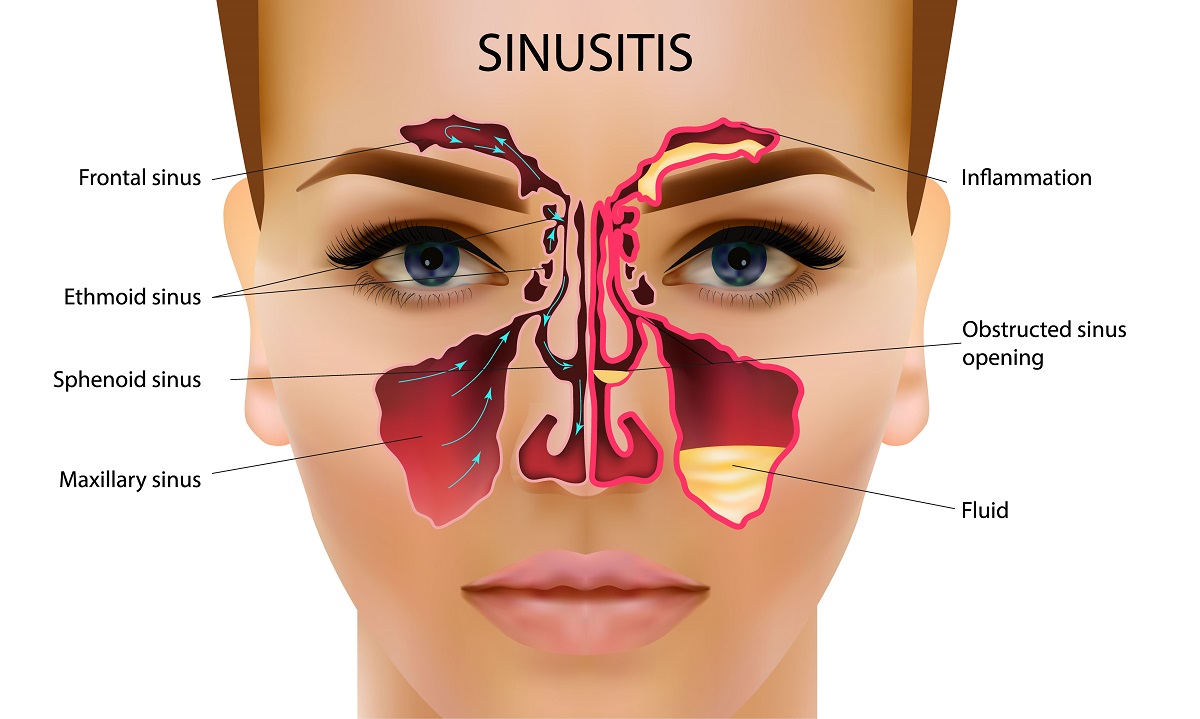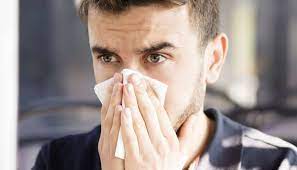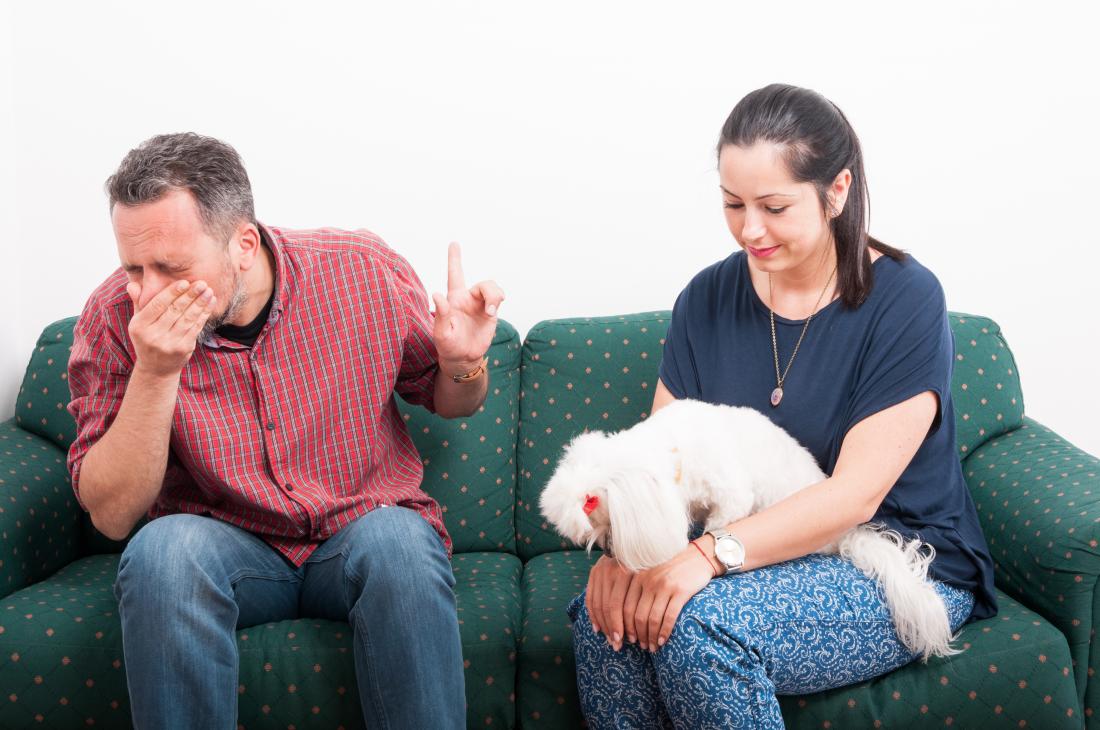Rhinosinusitis, Sinus headache, Headache, Sinusitis, Sinugenic, Non-sinogenic,Migraine
Root Cause of Disease
Sinus infections cause sinus headaches. Anything that makes mucus buildup in the sinuses can lead to a sinus infection, such as:
- The common cold is most often to blame.
- Seasonal allergies
- Nasal polyps, abnormal growths in the nose or sinuses. Nasal polypscan block mucus from draining.
- Deviated septum, which is when the line of cartilage and bone down the center of the nose isn’t straight. A deviated septum can prevent mucus from properly draining
Symptoms
- Pain, pressure and fullness in the cheeks, brow or forehead.
- Worsening pain if you bend forward or lie down.
- Stuffy nose.
- Fatigue.
- Achy feeling in the upper teeth.
Causes
Sinus headaches are a symptom of sinus infections, which cause pressure and pain in your face. Having a cold or allergies increases your risk of sinus infections and headaches. But so-called sinus headaches may actually be migraines with nasal symptoms. In that case, a doctor can help you find long-term relief.
Home Remedies to treat Sinus Head ache
Remedy – 1:
Materials: Inhaling steam(ఆవిరి పీల్చడం).
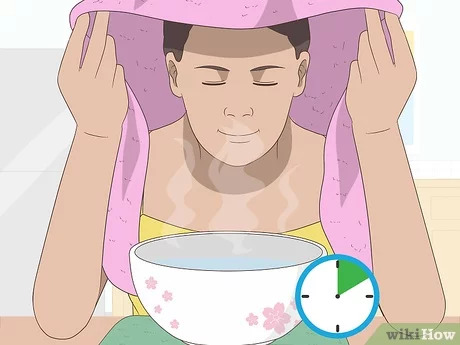
Procedure:
- boiling some water and allowing it to cool slightly.
- pouring the water into a large heatproof bowl.
- leaning their face over the bowl.
- covering their head with a small towel.
- breathing slowly in and out through the nose.
Uses:
The main benefit of breathing in moist, warm steam is that may help ease feelings of irritation and swollen blood vessels in the nasal passages. The moisture may also help thin the mucus in your sinuses, which allows them to empty more easily.
Product Link:- Face Steamer
Remedy – 2:
Materials: Cleaning the nose with salt water. (జల నీతి)
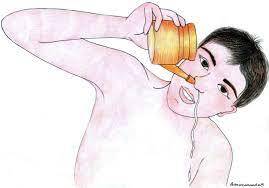
Procedure:
- Purchase 1 pint of distilled or sterile water. Alternatively, boil regular water from a faucet for 3–5 minutesTrusted Source and then leave to cool.
- Dissolve 1 teaspoon (tsp) of salt and 1 tsp of baking soda into the water.
- Wash the hands with soap and water.
- Stand over a sink and pour a small amount into a cupped palm. Sniff the water into one nostril, or use a nasal irrigation device, such as a neti pot.
- Repeat in the other nostril. Allow as much water to flush out of the nose as possible. If it runs down the back of the throat, spit it out.
Uses:
Jala neti can remove mucus and pollutants from the nasal passage and sinuses, allowing air to flow without obstruction. This helps relieve allergies, colds and sinusitis. 2. It claims to prevent and manage diseases of the respiratory tract such as asthma, pneumonia, bronchitis and pulmonary tuberculosis.
Product Link: jala neeti
Other Remedies
Resting:
A good night’s sleep can help the body to heal. Sleep stimulates your brain to release hormones that encourage tissue growth. Also when you’re at rest, your body is able to produce more white blood cells essential for attacking viruses and other bacteria.
Elevation:
Just as sleep is essential for healing, how you sleep can alleviate sinus symptoms. Lying flat can increase mucus buildup in your nasal passages, increase your sinus pressure, and disrupt your sleep cycle.
Hydration:
Dehydration can contribute to your sinus passages drying out and increased pressure in your face. Increase your water intake throughout the day if you’re feeling under the weather. Fluids will reduce blockages in your sinuses.
While water may be your first choice to remain hydrated, you can also retain fluids through other foods and beverages including:
- broth soups
- ice cubes
- tea
- water-based vegetables and fruits
Relaxation techniques:
Your sinus pressure may cause you to feel tension in your head, face, and neck. Biofeedback therapy, an alternative treatment method that teaches you how to control your bodily functions, can relieve this pressure.
Exercise:
Similar to yoga, exercise can reduce sinus pressure. Physical activity can increase blood circulation and temporarily relieve congestion to ease breathing. Although uncomfortable to perform while being sick, physical activity can help to improve your recovery time and speed healing.
Preventions
Take these steps to reduce your risk of getting chronic sinusitis: Avoid upper respiratory infections. Avoid contact with people who have colds or who are sick with other infections. Wash your hands frequently with soap and water, especially before meals.


